Seasonal Amazake and Rice Koji at Kome-no-Hana
Jun 06,2024
Seasonal Amazake and Rice Koji at Kome-no-Hana
Jun 06,2024
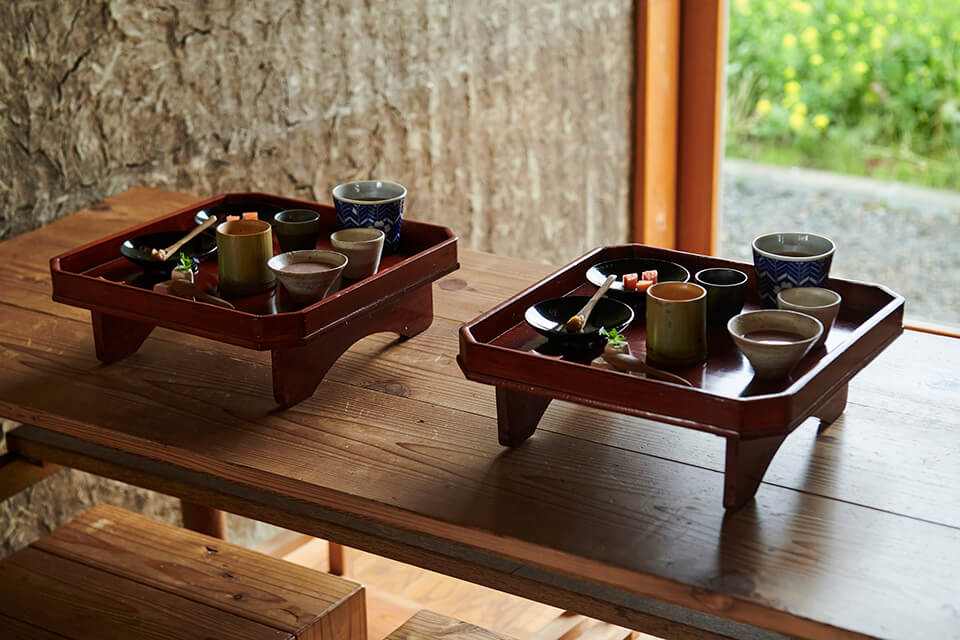

The first thing that comes to mind about Chigasaki, Kanagawa, for most people is probably Shonan beach. But if you drive a little farther, you’ll discover the town has broad, pastoral landscapes. We visited the Kome-no-Hana koji [rice malt] outlet on a spring day when the surrounding fields were covered in bright yellow canola blossoms in full bloom. We spoke with owner Kumazawa Hiroyuki, who started the koji outlet in this location in 2019.
After a few minutes’ drive from Chigasaki train station, a tidy-looking building with a tile roof came into view. The sign in front read Kome-no-Hana. On opening the door to the building, the owner Kumazawa Hiroyuki ushered us in with a smile and lead us directly to the koji-muro production room at the back of the building.
Kome-no-Hana was built in 2019. But despite still being very new, the koji outlet makes koji using traditional tools, Kumazawa says.
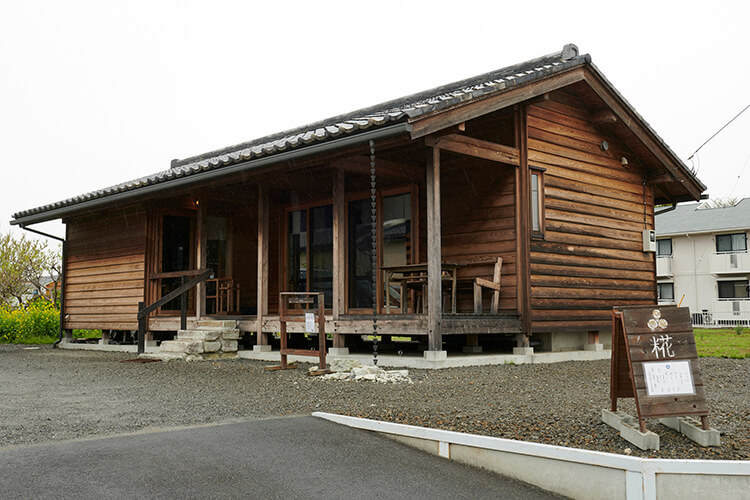

Kumazawa Hiroyuki, owner of the Kome-no-Hana koji outlet
“This piece of equipment is called a koshiki, a special vat designed for steaming rice. You fill a caldron with water, turn on the gas to boil the water, and place the vat on top. You then place rice inside the vat, cover it with a cloth, and let it steam from the boiling water below. The koshiki can steam as much as 120 kilograms of rice at one time.”
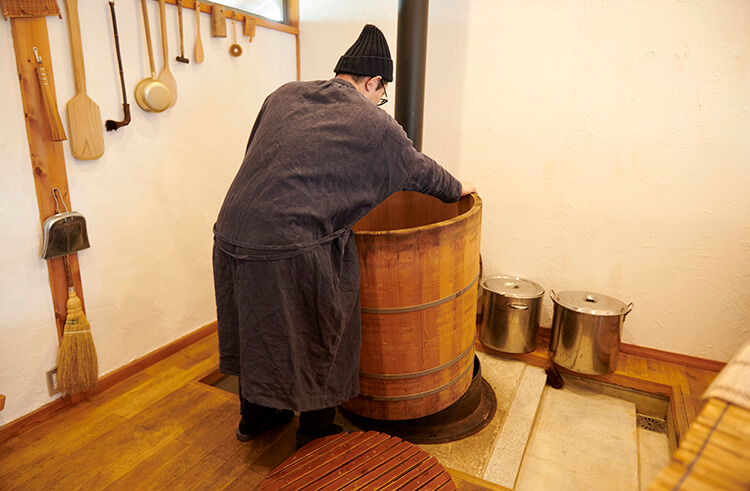
A koshiki is a large vat placed over a caldron to steam rice. The vat was made by Oketatsu, a barrel-maker in nearby Odawara.
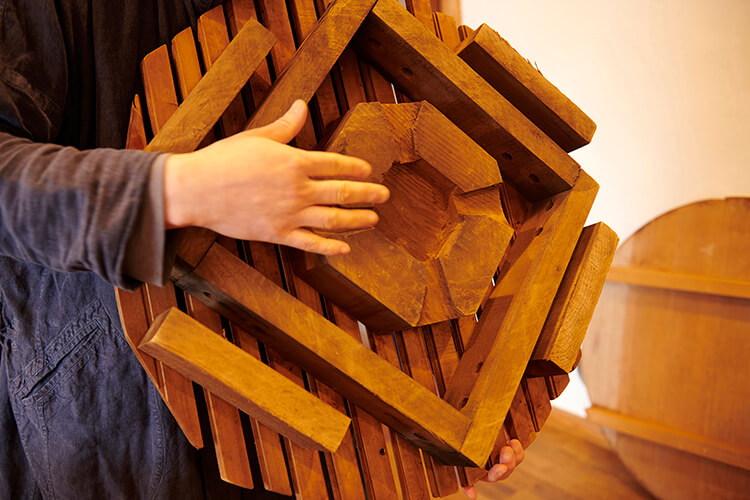
Kumazawa hand built this frame that is designed to spread the steam evenly by watching and imitating how others built caldrons
Once the rice is steamed, it is moved to the koji box where the rice is sprayed and inoculated with koji mold.
“After letting the rice cool and inoculating it with koji mold, I put the rice imbued with koji mold in rectangular stacking trays called koji buta. I leave it in the trays for a full day while monitoring the progress of the mold and restacking the trays periodically to control the temperature. The koji is ready in just under two days after steaming.”
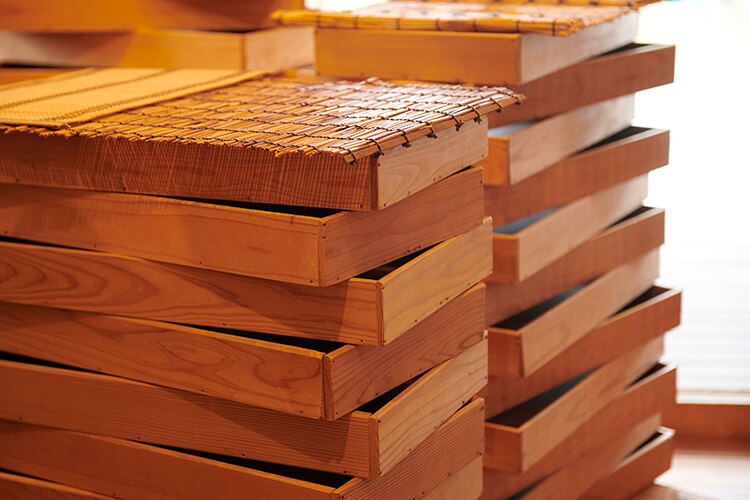
Stacks of koji buta in which rice inoculated with koji mold is left to rest
Kumazawa does all the operations by himself. It’s strenuous work, but he says he started his outlet with the idea of making koji with traditional techniques.
“There were, of course, lots of options, but I decided that if I’m going to do this, I’m going to do it in the traditional way. I don’t need to go to the bother of streamlining the process to make it easier for myself. I decided that if I’m going to start now, it’s better to do it at this scale, doing it the right way regardless of the time and effort required. Not only is it sexier to do it this way (laughs), I came across data that shows that you get higher quality koji when steamed in a koshiki and produced with the koji buta technique. All of these things convinced me to make my koji this way.”
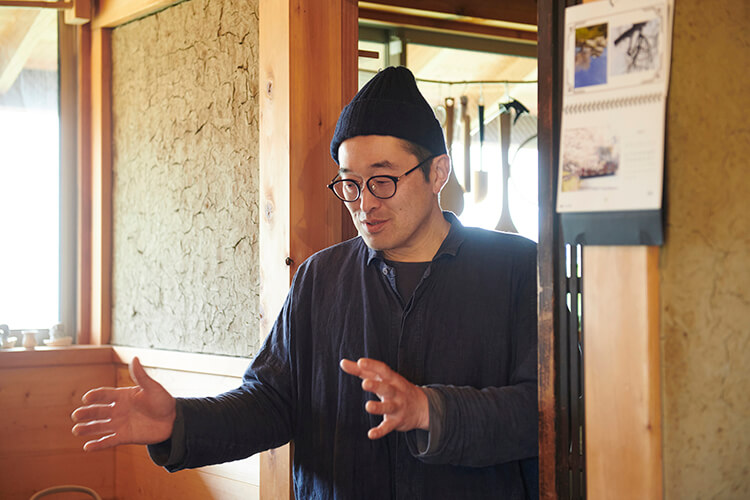
Kumazawa uses rice produced by local Chigasaki farmers, and he sources his koji mold from a moyashi-ya — store dealing in koji spores (koji mold) — in Ibaraki.
“There are actually many varieties of what we call koji mold. When I was starting out, I experimented with many koji mold varieties until I settled on the type that I use now. The koji mold I use, in the words of my moyashi-ya, is rowdy. It is a fairly robust type. Because it decomposes quickly, my moyashi-ya initially told me I should stop using it. But recently, I’ve come to understand its tendencies and character much better, so I can make koji with confidence now. Although it’s vigorous and ferments fast, it’s super delicious. I have a customer who has been making her own miso for 60 years, and she told me that her miso tasted better than ever after switching to my koji. Nothing pleases me more than hearing stories like these.”
Kumazawa related this story with a truly happy smile on his face.
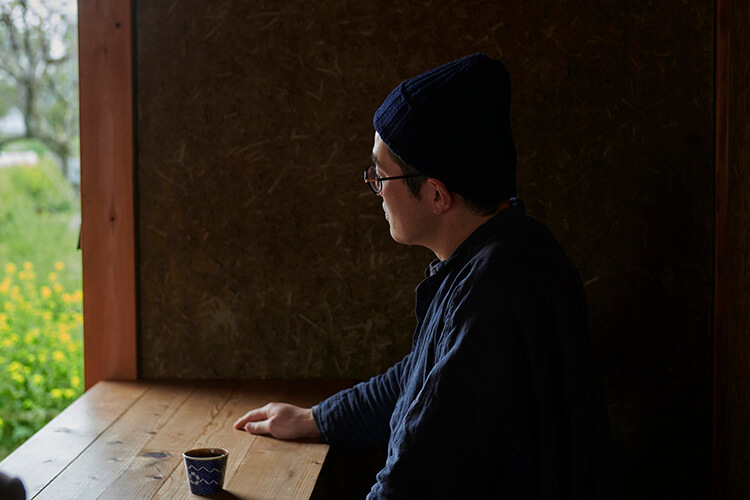
Kumazawa says he worked at a company before starting Kome-no-Hana. So what led him to start a koji outlet?
“There was a period where I would think deeply about what I wanted to do with my life while commuting to my company job. During that time, I got involved with an NPO called BeGood Café, whose mission is about developing a more wonderful society and ways of living. I helped out with the NPO while continuing to work.”
The turning point came with the 2005 Aichi Expo. BeGood Café was approached by the organizers about creating a café to promote the themes of nature and the environment in the Expo’s NPO village.
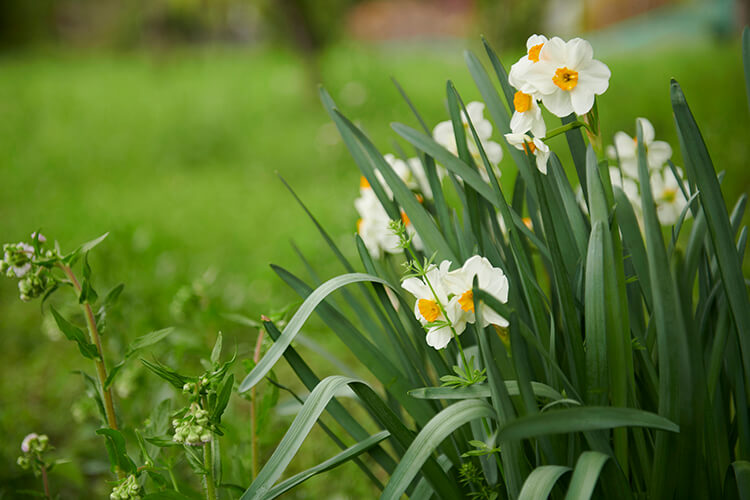
“The plan was that the café would serve meals using produce we grew in fields and rice paddies, and we would purify the café’s wastewater with the power of plants. The energy for the café would be generated using windmills and other renewable sources. I wanted to be a part of the café, but I would have to quit my job to do so. I wondered what I would do after quitting my job and the Expo ended. The idea I came up with was to continue the café created for the Expo at my grandfather’s house, which was not being used at the time.”
In the end, he was not permitted to open a permanent café at that location due to government land use restrictions. He was, however, able to open a farm where people could experience farming first-hand. He continues to operate that farm, called Rivendel, with his wife, along with Kome-no-Hana.
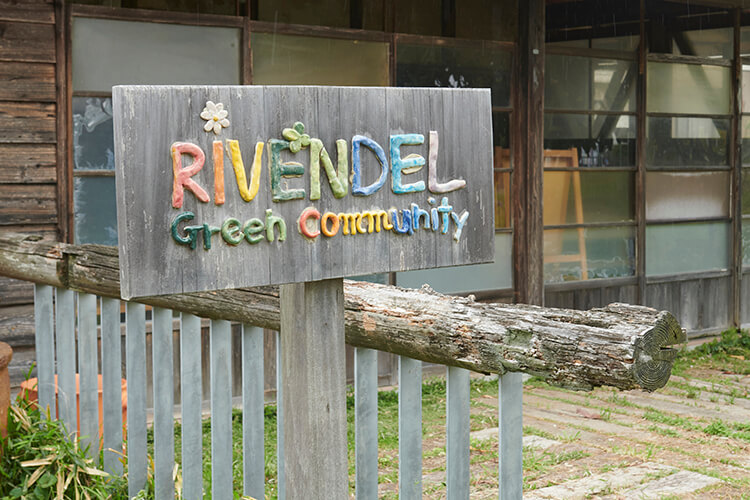
“Rivendel’s concept was to be a farm that nurtures a lifestyle. More than just raising vegetables, I wanted to emphasize eating deliciously, and because we had a kitchen, I wanted to make processed foods as well. So we began growing soybeans and grains and making miso and soy sauce. In fact, once we started making our own miso and soy sauce, my wife’s health condition improved. And when we gave some to friends, they were thrilled and asked for more. As these things happened, I began to realize I needed a koji outlet.”
Kumazawa says that one reason he decided to start his own koji outlet was that he had always thought that towns with koji stores were nice places to visit.
“Towns with koji stores tend to have clean water and produce rice. Also, the fact the town has a koji store means that there are people living there who make miso and soy sauce by hand and lead enriched lives. It also means that the area will be a place where koji makers and consumers come together to create their own value. Just having a koji store itself really enhances a town.”
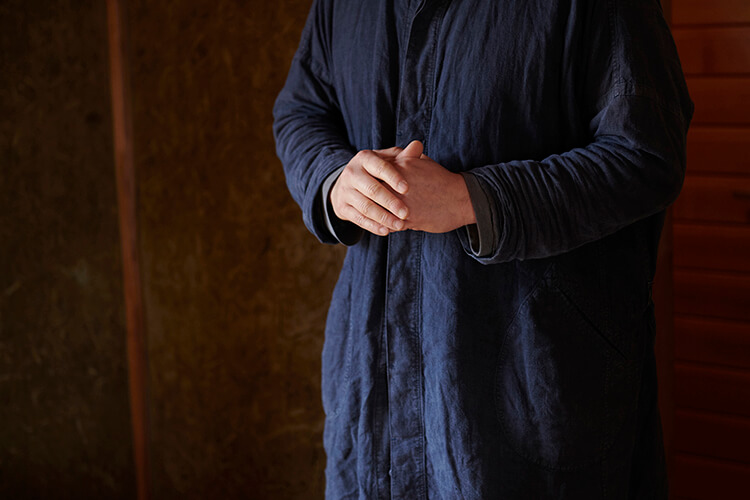
He initially asked around at saké breweries he knew whether they would produce koji for him. Kumazawa recalls that they turned him down and instead suggested he make koji himself. You would imagine that someone with no experience might be somewhat hesitant at jumping straight in. But surprisingly, Kumazawa decided right away to give koji-making a shot.
“I figured that no matter how long I waited, no one was going to come along and do it for me. If it were about a bakery or a hairdressers or a café, if I waited long enough, someone would surely come along and do it for me. But not for a koji outlet. That’s why I decided to try making koji on my own.”
Another factor was his long-held desire to be useful to the community throughout his life.
“I wanted a job where each day builds on top of each other toward something bigger. Even if it’s only as thin as a sheet of paper, I wanted to stack up my accomplishments, layer by layer. Take, for example, craftspeople like our living national treasures. Even as their physical abilities and mental faculties decline with age, the sheer amount of experience they have accumulated is amazing. I want to contribute to my local community through this kind of work. I believed that koji-making fell into this category of work and was worth devoting my life to.”
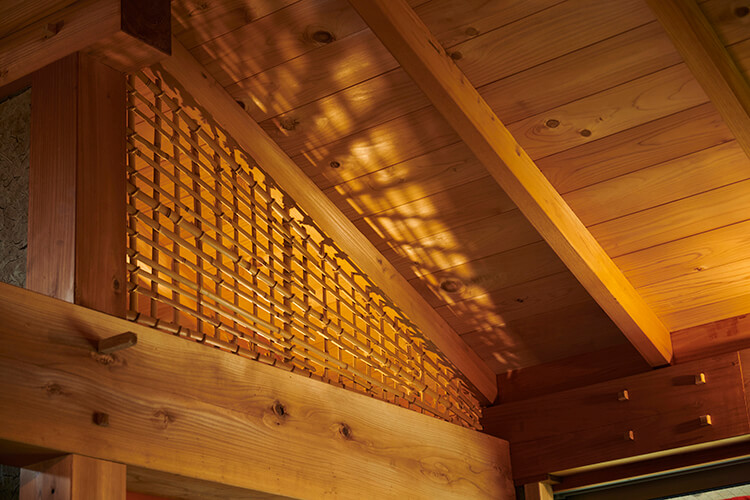
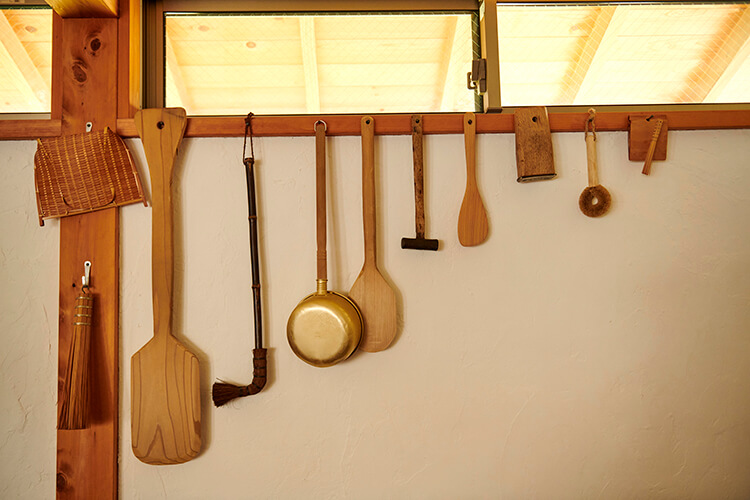
Once he actually began to learn the craft of koji-making, Kumazawa sensed that it was joyful work, with the aroma of freshly cooked rice filling the air. This was the time he realized he could stick with this profession. With the help of many other people, along with his own sweat equity, he fashioned the vats and other tools and equipment, built the koji-muro, and finally, in 2019, opened Kome-no-Hana.
At Kome-no-Hana, you can purchase koji, salted koji, and sweet koji. You can also sample a tasting set of four types of sweet koji in the store. We enjoyed the sweet koji tasting set while gazing out the window at bright yellow canola blossoms in full bloom and vibrant new buds sprouting on persimmon trees.
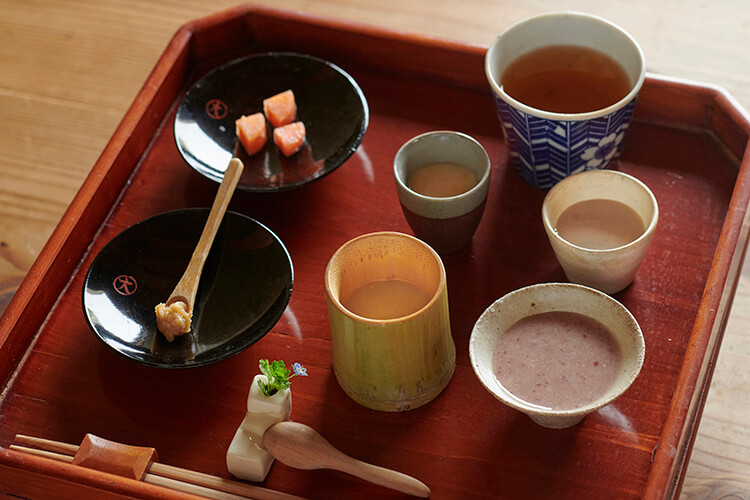
Enjoy different koji flavors with a tasting set of four types of sweet koji
“On the spoon is our specialty miso, which contains twice the koji as ordinary miso. Behind it are carrots grown right here that have been pickled in salted koji. Next, the bamboo cup contains sweet koji made with koji and water. The last item varies depending on what’s available seasonally. Today, we have three types of amazake [a sweet drink made from fermented koji] fermented with azuki beans, kumquat peels, and walnuts and koji respectively.”
While listening to this explanation, we tasted each one. The miso had an exceptional aroma, and the carrots had a mellow saltiness to them and a wonderfully delicious flavor. The amazake made with sweet koji and walnuts had a full taste with a prominent sweetness and body. The kumquat-peel amazake was a perfect blend of the kumquat’s aroma and the amazake’s sweetness, giving a refreshing flavor that bloomed in your mouth. The instant we tasted it, we couldn’t help but exclaim: “This is amazing!”
“The kumquats are delicious, aren’t they. To be honest, I don’t like drinking amazake straight. But I love this kumquat amazake. Amazake made with the peels of other citrus fruits is equally delicious. Today, I had walnut amazake available, but when in season, I recommend almonds too. Nuts go well with koji and make delicious amazake no matter the variety.”

Kumazawa says he uses kumquats and nuts he picked in his own field. To be sure, the field in front of us was full of various budding seasonal trees and vegetables and herbs growing up in abundance.
“This is an edible forest. I created this forest at the same time I built Rivendel. Among the many plants and trees you can find here are walnuts, almonds, kumquats, grapefruits, blueberries, pears, apricots, loquats, chestnuts, mulberries, and Japanese angelica trees. By coming in direct contact with nature and cultivating various vegetables and fruits, I’ve found myself beginning to understand the rules that exist within nature. I never cease to be amazed and make new discoveries.”
Kumazawa says there is much we can learn from the way that koji naturally ferments in step with the climatic conditions and from the way that plants and vegetables grow in rhythm with the changing seasons without attempting to grow faster or larger than they should.
“Plants grow at their own pace, in keeping with what they are. I hope I can grow my place little by little as well, while learning from these aspects of nature.”
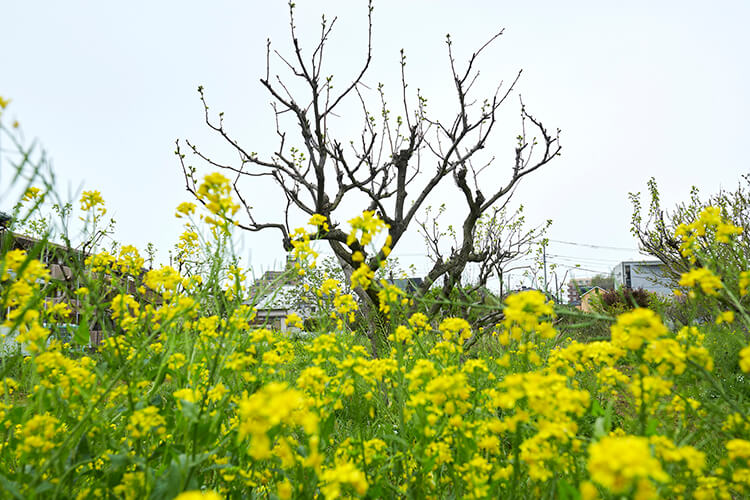
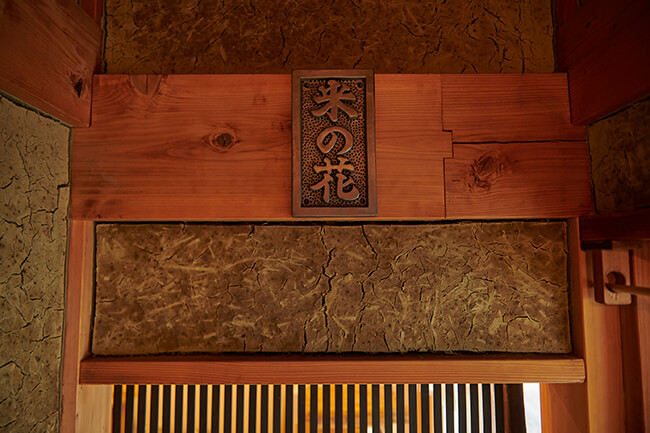
Kome-no-Hana produces and sells koji, salted koji, and amazake and offers miso and soy sauce-making classes by appointment.